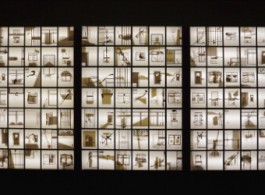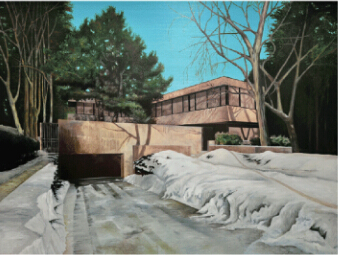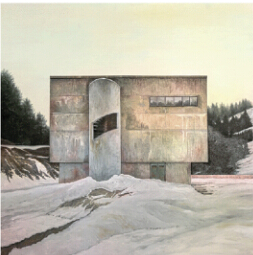Pearl Lam Galleries
Singapore
Singapore—Pearl Lam Galleries is pleased to present PLUGGED, a group exhibition featuring the works of contemporary Indonesian artists Andy Dewantoro, Aditya Novali, and Yudi Sulistyo. Inspired by the word “plug” and its semantic contradictions, the exhibition seeks to create a transitional space between a beginning and an end, bringing together the work of three artists of vastly different methodologies and mediums. The exhibition explores the multiple meanings in each of their works, including discourse on man’s relationship with nature, technology, and each other.
Yudi Sulistyo’s works are inspired by his childhood memories of making toys from recycled materials and watching war-themed movies with his father. Sulistyo’s sculptural installation of a four-metre plane, modelled realistically after a North American P-51 Mustang, thrusts forth into the exhibition area, disrupting the usually immaculate gallery space. In other areas, a decrepit robust rocket stands imposingly, dominating the physical space. Parts of the artworks are deliberately wrecked, revealing accurately imagined and meticulously created internal mechanical components. Sulistyo’s selfimagined models of damaged militaristic vehicles are not a projection of the near future but a snapshot of the present; they are a dismal depiction of the shortcomings of technological development and the catastrophes that result from our inability to control the powers we seek to harness. Their fragile nature undermines the destructive powers of the war machines he chooses to recreate, removing their power and reducing them to things of beauty.
Aditya Novali’s milestone work THE WALL : Asian (Un)Real Estate Project presents an imaginary real estate project, parodying the showflats that abounded at the time. The work was conceived in 2012, a time when Indonesia was experiencing rapid urban growth, featuring an explosion of new apartment buildings and skyscrapers. Real estate developers sold ideas of a covetable, luxurious lifestyle in tight units stacked on top of each other. Though visually similar to promotional sales tools, Novali’s intricate maquette questions the background of real estate projects that sell the idea of improved social welfare, and whether the current style of housing provides sufficient space for the nourishment of not only the physical body but also the spirit. The interactive work allows viewers to turn the triangular tubes to reveal different facades and spaces. Each of the 160 rooms is individually constructed, revealing the circumstances of their inhabitants and their relation to the broader social context.
Four years later, Novali’s THE WALL : Asian (Un)Real Estate Project—The Abstraction revisits the original work, extracting the essence of his initial concerns and presenting them in a more pared-down visual language. Using Plexiglas as the primary medium for the work, The Abstraction makes use of a built-in light source to play with shadows and illuminate the details of each room. A duality of interrelations extends the interaction beyond the boundaries of the original work. The two works enter into a conversation between the realism represented by Novali’s original THE WALL and the ambiguity in representation in his new work.
A far cry from the subdued monochromes characteristic of his earlier style, Andy Dewantoro’s new series of work reflects a fresh perspective and renewed optimism on life with his bright colour palette. From a distance, the lush green pastures and open skies surrounding his sturdy concrete buildings seem to create utopic visions of a futuristic terrain—ecological sustainability coupled with the cement structures he has forged, standing tall and unwavering. Intrigued by how urban landscapes are able to shape the identity of a city more than the characters of its inhabitants, Dewantoro eliminates all tracesof human presence in his scenes, instead placing the focus on the rigid constructions that shape the core of his canvases. The artist’s landscapes deliberately omit any sense of vitality in the atmosphere, revealing instead a sense of displacement of the modern man through his architectonic metaphors.
Somewhat of a contranym, “plug” self-reflexively denies its own meanings with conflicting connotations; the word can mean to reconnect and initiate a flow or energy, or a stifling or physical blockage. The audience will be inserted into an unsettling yet familiar reality, forced to see past the works’ cryptic surfaces and engage with their relevance to human life and its climaxes. The accumulated components of the exhibition form an otherworldly spatial landscape teeming with paradoxical juxtapositions waiting to be uncovered.






